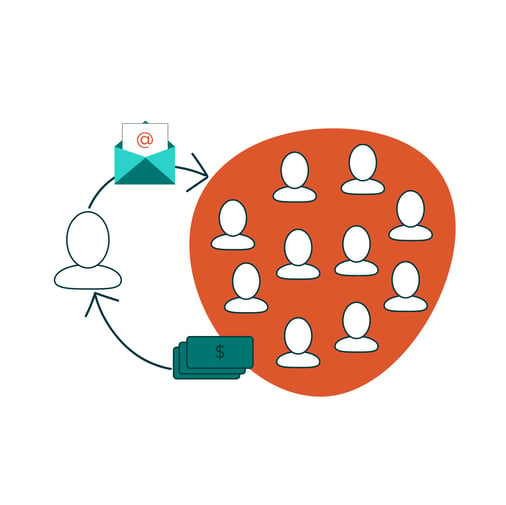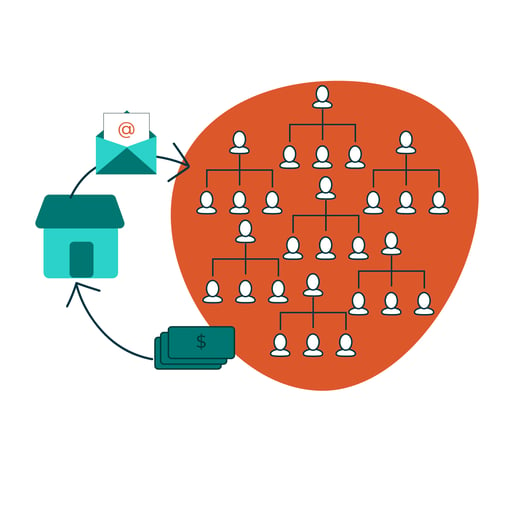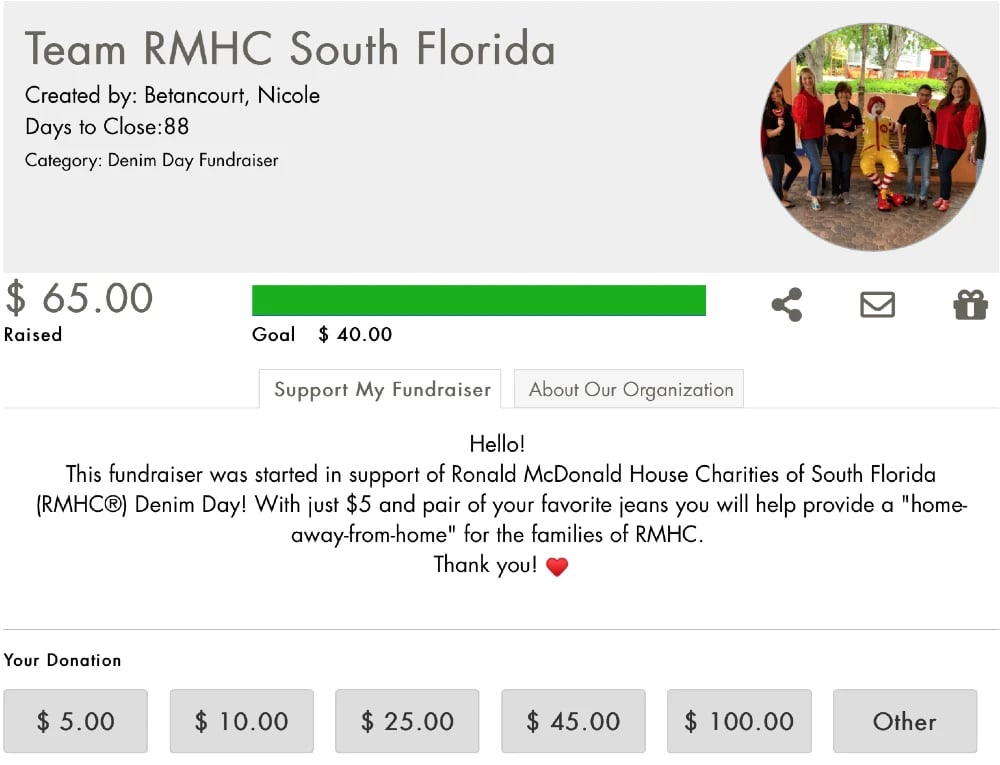Peer to Peer Fundraising: The Smart Way to Grow

P2P: What Even Is It?
Peer-to-peer fundraising (also known as “P2P” ) has been around for decades. If you’ve participated in or donated to walks, runs, or rides for charity, where participants collect monetary “pledges” for every mile they successfully complete to benefit a cause; if you’ve donated to a Movember campaign; if you’ve sold or purchased candy or magazine subscriptions to raise money for a non-profit org, you’ve engaged in P2P fundraising. In recent years, the majority P2P efforts are seen online, and they’re paying off for non-profits: according to industry sources, P2P accounted for 24% of all online giving as of 2015. If your organization doesn’t already have a thriving P2P program, it’s safe to say you’re missing out on an important fundraising channel.
P2P is a type of crowdfunding that leverages the relationship you’ve built with your donors and in turn, their professional and social networks, to meet your fundraising goals and grow your donor base. By recruiting people who already support your organization, including donors, board members, volunteers, and even social media followers, you create opportunities not only to raise more money than you might through a single appeal but to connect with new donors via testimony from a trusted friend or colleague.
Crowdfunding looks sort of like this:

Peer-to-Peer fundraising looks a bit more like this:

In other words, peer-to-peer fundraising is crowdfunding multiplied. When you’re crowdfunding, you’ve got a single, central donation page. But P2P sets each participant up as a fundraiser, with their own customizable landing page displaying their fundraising goal, their current total, and most importantly, their written testimony telling friends and colleagues why your work is important to them.

Team fundraiser for Ronald McDonald House Charities created with Exceed Beyond by Arreva.
P2P fundraisers can take a number of different forms depending on the circumstances and need. They can be ongoing, with no time limit, or time-based, meaning funds must be raised by a certain date. They can allow individuals to create fundraising pages and track the funds they raise through them, and they can also allow donors to join together in fundraising “teams” and compete to see who raises the most money for the cause.
Here are a few forms P2P fundraisers can take:
- Campaigns your organization launches, including themed campaigns (Spring, End-of-Year) or those based on a particular need (Buy backpacks for kids! Help us replace our roof!)
- Personal milestones, such as birthdays or anniversaries, in honor of which donors can set up fundraisers for your org
- Events, activities, or challenges such as walks, races, or competitions put on by your organization that encourage donors to seek out pledges or sponsors
- Giving Days, such as Give Big and #GivingTuesday, provide opportunities for donors to get the word out and bring in needed funds for your org
How Can P2P Help My Organization?
If you’re not yet convinced that peer-to-peer fundraising is for you, consider that word of mouth is still one of the most effective ways to promote your organization, and P2P is all about getting the word out about your work while bringing in new donations and most importantly, new donors. It’s far easier for a donor to reach out to a friend and say “I give to this org and they do excellent work” than it is for you to reach the same person and say “your friend supports us and you can too.” And reaching them is only half the battle.
P2P fundraising allows each donor to create their own fundraising page, set goals, and write a testimonial that tells friends, family, colleagues, and social media connections why they believe in your organization. Everyone who takes part in your P2P fundraising campaign or event becomes an advocate for your org and the results their donations have helped bring about. Their story inspires and influences their network to get involved.
And with P2P, you’re not only growing your donor database, but you’re also giving your supporters a sense of ownership and satisfaction, increasing their loyalty and their trust in you. You’re building on existing relationships even as you acquire new ones.
Here’s Why It Works
Humans are social animals. We take our cues from the people around us and we behave according to mostly unspoken, but nevertheless agreed-upon, norms. By watching how others react to stimuli, we determine the socially “appropriate” response, and there’s a strong drive to mimic the reactions we see modeled by people in our circles. In his book “Influence: The Psychology of Persuasion,” Dr. Robert B. Cialdini discusses a study that found that when a power provider communicated to customers what percentage of their neighbors had cut down on power usage, customers were more likely to conserve energy. When it comes to acts like giving to fundraisers, these things can also be performative: a way to show ourselves and others that we’re the type of person who cares about important issues. In any case, as we see good citizenship modeled (and rewarded, socially, professionally, and otherwise), we take it up, and as we model it ourselves, we pass it on.
Additionally, while some of us are more competitive than others, it’s long been agreed that competition—especially for prizes but even just for glory—is a great motivator. And the more you can gamify the experience, the better. Gamification in fundraising has been around since we were kids selling chocolate bars and magazine subscriptions to win boom boxes. The more things change, the more they stay the same, but while prizes are a great motivator, they’re not required—legions of FitBit users will tell you that “winning” badges has galvanized them to walk more steps than they ever imagined.
Go Forth and P2P
In short, peer-to-peer fundraising helps you reach a larger audience, builds awareness of your work and support for your cause, and increases your organization’s name recognition. It brings in new donors and builds on relationships with existing supporters. It engages donors, making them the hero of the story, and giving them a sense of ownership over the work and the results. There really isn’t a downside. So if you haven’t already, consider putting P2P to work for you and reaping the benefits for your organization.

